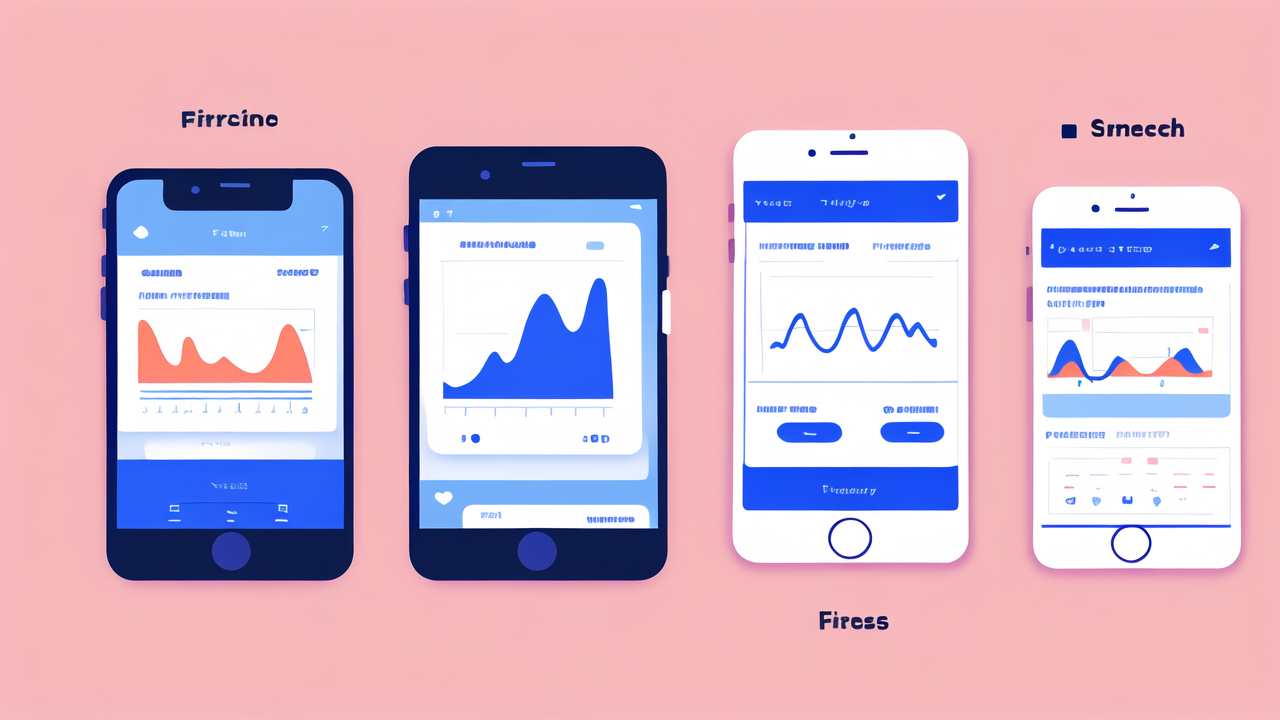Understanding the Role of Smartwatches in Fitness and Health
The Evolution of Smartwatch Technology in the Fitness Industry
Smartwatches have come a long way in the fitness industry. They started as simple step counters. Now, they're advanced health monitors. Early models only tracked steps and calories. Today's smartwatches can measure heart rate, sleep quality, and even blood oxygen levels.

The first fitness trackers were bulky and had limited features. Now, smartwatches are sleek and packed with sensors. They can track a wide range of activities. From running to swimming, these devices cover it all. The evolution has been rapid and exciting.
Smartwatches now use AI to provide personalized insights. They can suggest workout plans based on your goals. Some can even detect falls and call for help. The technology keeps improving, making smartwatches essential fitness tools.
Key Features of Top-Performing Fitness Smartwatches
Top fitness smartwatches offer a range of features to enhance your workout experience. Here are some key features to look for:
- Accurate heart rate monitoring
- GPS tracking for outdoor activities
- Water resistance for swimming
- Long battery life
- Sleep tracking
- Stress level monitoring
- Body composition analysis
- Workout plan suggestions
- Integration with fitness apps
- NFC for contactless payments
These features help users track their fitness journey in detail. They provide valuable data to improve workouts. The best smartwatches combine these features with user-friendly interfaces. This makes it easy for anyone to use them effectively.
How Smartwatches are Shaping the Modern Fitness Landscape
Smartwatches are changing how we approach fitness. They make it easier to set and track goals. Users can see their progress in real-time. This instant feedback motivates people to stay active. It's like having a personal trainer on your wrist.
These devices are also making fitness more social. Many allow users to share their achievements. You can compete with friends or join online fitness communities. This social aspect adds fun and motivation to workouts.
Smartwatches are also improving the accuracy of fitness data. This helps trainers and doctors give better advice. They can use the data to create personalized fitness plans. This tailored approach leads to better results and healthier lifestyles.
The Top Body Measurement Tracker Smartwatches in the Market
Analyzing Market Leaders in Smartwatch Fitness
Several brands dominate the fitness smartwatch market. Apple Watch leads with its comprehensive health features. It offers ECG and fall detection. Fitbit focuses on long battery life and sleep tracking. Garmin is popular among serious athletes for its durability and GPS accuracy.

Samsung's Galaxy Watch series combines fitness with smartwatch features. It offers a good balance for everyday users. Polar and Suunto cater to endurance athletes. They provide detailed metrics for training and recovery.
Each brand has its strengths. Apple excels in overall health monitoring. Fitbit is great for sleep tracking. Garmin is the go-to for outdoor enthusiasts. Choosing the right one depends on your specific fitness needs and goals.
Innovative Technologies Driving the Fitness Smartwatch Market
New technologies are constantly emerging in the fitness smartwatch market. One exciting development is continuous glucose monitoring. This helps users understand how food affects their energy levels. Some watches now use bioimpedance sensors for body composition analysis.
Advanced sleep tracking is another area of innovation. Smartwatches can now detect different sleep stages. They provide tips to improve sleep quality. Some even monitor blood oxygen levels during sleep. This can help detect sleep apnea.
Stress management features are becoming more sophisticated. Watches can now detect stress levels and suggest relaxation exercises. They use heart rate variability and other metrics to do this. These innovations are making smartwatches more valuable for overall health.
The Impact of Software and Ecosystem on Smartwatch Fitness Features
The software and ecosystem of a smartwatch are just as important as its hardware. A good ecosystem includes compatible apps and services. This expands the watch's capabilities. For example, Apple's Health app integrates data from various sources. This gives users a complete health picture.
Software updates can add new features to existing devices. This keeps the smartwatch relevant for longer. Regular updates also improve accuracy and fix bugs. A strong developer community can create innovative apps for the platform.
The ecosystem also includes how well the watch works with other devices. Can it connect to gym equipment? Does it work with smart scales? These connections enhance the overall fitness experience. A robust ecosystem makes a smartwatch more versatile and useful.
Enhancing Lifestyle and Wellness with Smartwatches
Integrating Fitness Tracking into Daily Routines
Smartwatches make it easy to track fitness throughout the day. They remind you to move if you've been sitting too long. Many have features to track daily steps, floors climbed, and active minutes. This encourages users to be more active in their daily lives.

Some watches offer guided breathing exercises. These can help reduce stress during busy days. Sleep tracking features help users understand their sleep patterns. This can lead to better sleep habits and more energy during the day.
Smartwatches can also track water intake and nutrition. Some allow you to log meals directly on the watch. This comprehensive tracking helps users maintain a healthier lifestyle overall.
The Importance of Accurate Body Measurements for Fitness Success
Accurate body measurements are crucial for fitness success. They help users set realistic goals and track progress. Smartwatches that measure body composition can show changes in muscle mass and body fat. This is more useful than just tracking weight.
Precise heart rate monitoring helps users exercise at the right intensity. It ensures they're working hard enough to see results, but not overexerting themselves. Accurate calorie burn estimates help with weight management.
Some advanced smartwatches can even measure VO2 max. This indicates cardiovascular fitness. Tracking these metrics over time shows real progress. It motivates users to stick to their fitness plans.
The Future of Fitness: Predictive Analytics and AI in Smartwatches
The future of fitness smartwatches lies in predictive analytics and AI. These technologies will provide more personalized health insights. AI can analyze patterns in your data to predict potential health issues. It might warn you about an upcoming cold based on changes in your vitals.
Predictive analytics could suggest when to rest or push harder in workouts. It could optimize training plans based on your recovery and performance data. This level of personalization will make smartwatches even more valuable for fitness.
AI assistants in smartwatches may offer real-time coaching during workouts. They could adjust your training plan based on your progress and goals. The future of fitness is personalized, data-driven, and always at your fingertips with smartwatches.




Leave a comment
This site is protected by hCaptcha and the hCaptcha Privacy Policy and Terms of Service apply.